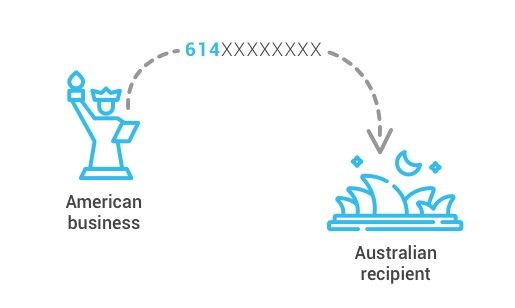Share article:
Avoid awkward moments after you hit ‘send’ on bulk SMS

When you’re sending text messages to the masses, you want to make sure everything’s spot on before you hit ‘send’. Not just the actual text message, but also the quality of your database.
There’s nothing worse than suddenly remembering you were meant to remove someone from your database, but hadn’t. Or, paying to send an SMS to thousands of customers, only to have half bounce back.
To avoid awkward moments like these, you need to build and maintain a great database that’s ripe for bulk text messaging. Here’s how to prepare.
1. Sounds obvious, but do you know your customers’ mobile phone numbers?
It all starts here. Before you can even think about sending bulk SMS, you need to build up a database. Often, businesses collect customers’ names and email addresses – yet forget that most important element, their phone number.
If you need to collect people’s phone numbers, use these helpful tips as a guide. While you’re at it, you might want to collect other information that could help you personalize your marketing campaigns – such as their location, where they shop, product preferences, or communication preferences.
And remember, people are more protective of their personal information than ever before, so ask nicely and let them know how you’ll use their data.
How Rona Scrubs built a custom database
Rona Scrubs is a non-profit that sews scrubs for essential workers. In building its database, it not only sought mobile numbers from doctors, nurses, and other hospital workers – but also sizing and locations.
The sizing info helped them calculate how many of each size were needed, and locations helped them organize deliveries with distributors.
Check out the case study.
2. When did you last check the quality of your data?
With your database growing, don’t forget to check your data regularly. People can change mobile phone numbers or locations from time to time, and their preferences may change, too. For example, are you up-to-date with those who’ve opted out?
Depending on the nature of your database – it might be in a CRM like Hubspot or Salesforce, or in a simple spreadsheet – you could delegate the task of checking customers’ details with various members of your team.
For example, sales staff could check in with their regular customers or reach out to prospects on their contact lists. It’s a great way to touch base and confirm they’re still interested in your product or service.
Or, you could send out a friendly test message to all your customers from time to time, to check their details are correct.
If it’s just mobile phone numbers that you want to check, you can easily clean up a messy database using HLR lookups. These flag inactive, invalid, or unrecognisable numbers
Here’s what an ‘update your details’ message could look like:
“Hi there. [Company name] here. Quick check-in to make sure we’ve got your details right. Please reply with a YES if this message got through OK. Thank you!”
3. Are your country codes and prefixes good to go?
Did you know that mobile phone numbers look slightly different depending on which country you’re in? It’s important to check this when you’re adding your data.
If you’re an American business wanting to send messages to Australian mobiles, make sure you look up the relevant international prefix and include it. If you don’t, our web portal will assume you’re importing local numbers – which may cause an issue when sending.

For example, most local Australian mobile numbers use 04xxxxxxxx – so you’d need to change it to 614xxxxxxxx, with 61 being the international prefix.
Even with local numbers (for example, an Australian business sending to Australian customers), it’s still a good idea to use international prefixes as the perfect format for a phone number.
4. Have you sent out a test broadcast?
Whether you’re sending to 50 or 50,000 people, always test your broadcast first. While SMS is a cost-effective way to reach your customers, it can add up if you’re sending to dud phone numbers or you have to resend to all those people who missed out the first time around.
Here’s how to test things out. Set up a colleague (or even yourself) as a recipient, or perhaps a group of colleagues if you want to do regular test broadcasts.
Hit send, and see how it goes. Do the links work? How long did the message take to reach them? If using mobile landing pages, did the call-to-action work? If sending MMS, were the images crisp? Were there any glitches along the way?
Remember, there’s always room for improvement – it’s just a matter of looking for things to fix.
Ready to get started?
With your database looking ship-shape, you’re ready to send out mass text messages. Before you do, you might want to brush up on our 10 tips for texting etiquette.
Then, when you’re ready to go, why not sign up for a MessageMedia account and get 25 free SMS to play with.
